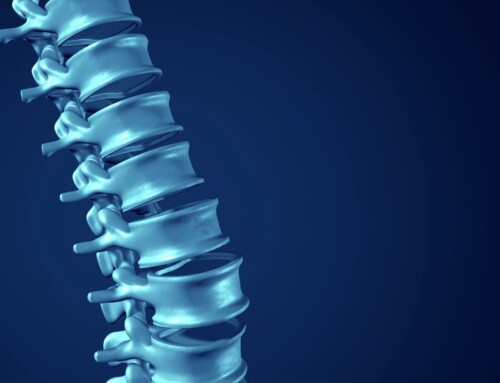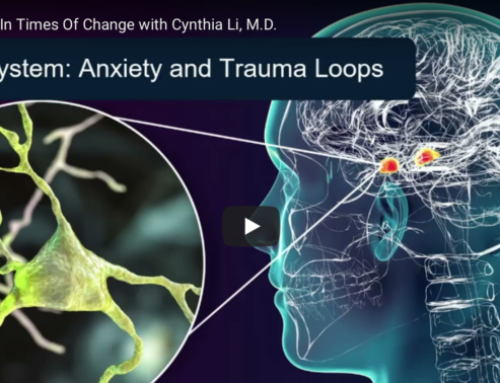Over the past several years of practicing integrative and functional medicine, I’ve observed two “ingredients” that consistently increase the likelihood of healing in my patients; in some cases, this meant complete remission/reversal of their conditions.
Is it the right diet? The right amount of sleep? The right type of exercise? While each of these is an ingredient to overall wellbeing, many patients who come to see doctors like me have already tried innumerable versions of “the perfect diet,” different fitness programs, medications, and supplements. Or else, they haven’t been able to sustain these changes to experience much benefit. Sometimes they’re more confused and exhausted than when they began.
So what are they missing?
Secret Ingredient #1
Trusting your intuition.
I remember how overwhelmed I was as a patient with Hashimoto’s and chronic fatigue, trying to navigate the number of diagnostic tests and treatment options, even agonizing over whether broccoli was good or bad for my thyroid. I knew that one size does not fit all, so learning to develop, then trust my intuition helped tremendously in guiding me on my path.
Research shows that following one’s intuition can ease stress and improve confidence in sorting through the complex web of decisions and recommendations. This can also help you choose a practitioner better suited to your personality and needs, or to fine tune your medications or supplements, or anything in between.
I’ve written previously about how to develop intuition. The foundation is a regular contemplative practice—because we have to learn to quiet our analytical minds to hear what our quieter, intuitive minds have to say.
Secret Ingredient #2
The second ingredient has been demonstrated in randomized controlled trials to address multiple root causes of various chronic conditions. Some tout its potential benefit to virtually all chronic disease.
So what is it?
Last month, I attended a 2-day workshop/retreat for healthcare practitioners in San Rafael, CA, led by my qigong teacher, Master Mingtong Gu. Master Gu teaches in the Wisdom Healing Qigong tradition, which says that for the healing of any and all conditions—mental, spiritual, emotional, or physical—the first and necessary step is to connect to your body. This concept wasn’t a new to me. I’ve been practicing qigong on a daily basis for six years. Still, each time I hear this basic teaching, it goes deeper. No matter how much pain or suffering we may experience, we have to inhabit our bodies. For one, we cannot heal that which we’re detached from. And second, we have everything within us to heal.
As I sat in my chair, thinking about this as a doctor—I’ve come to rely on my mind to think my way out of most dilemmas and challenges—Master Gu said, “You need to get out of your minds. You cannot heal by thinking. You need to go into the body and into the heart for the deepest healing.”
While I still have a hard time fully letting go of thoughts and information, I can attest from my own experience, and from observing my patients, that mind-body practices like qigong integrate the body’s networks—like the immune system and the hormone axis and the digestive tract—with the mind, creating new neural pathways and damping inflammatory cascades and changing gene expression. And somehow, our healing interacts with the healing of others, through mirror neurons or the electromagnetic fields of our hearts and minds or perhaps through mechanisms science hasn’t yet discovered. But for those who practice, this is the reward.
Initially, we might practice for something, as a transaction. Like lessening pain or boosting energy. In my case, I started practicing in order to get off the couch (I had been housebound). As we deepen our practices, we shift to practicing as transaction to practicing as transformation. The practice becomes like food: a source of nourishment and pleasure and bliss. Healing, then, happens as a side-effect.
If you don’t yet have a regular practice, consider this free 17-minute practice by Master Gu. A mere 17 minutes a day!
Then try 17 minutes twice a day.
Then increase your time to 30 minutes.
Some can develop a habit in as little as 3 weeks’ time. For others, it takes longer. For most, it takes about 2 months. Isn’t your health worth it?






Hello Dr Cynthia
I just watched you on Dr Hyman’s show on you tube
and I loved loved your story
I am going to see if your book is in audible
I love your whole story
Much appreciation
Julie
An audiobook is in the works. Not available yet, but hopefully soon!
It was so wonderful to listen to your story. It all makes so much sense!
Thank you!
Dr. Li, I recall you sharing your morning routine starting from 6am. It made a lot of sense to me and thought it would be good for me to try and model after myself. However, I can’t find it on your website anymore. Has it been removed? Sorry, if it is in your book. I haven’t read it yet but plan to!
Perhaps it was on the blog about circadian code? I wrote more details of my routines in my book, and why it’s important.
One of my greatest challenges was sleep, so I often picked an arbitrary time, like 6am, to start my day. If you’re able to get decent sleep, a better strategy–one more aligned with nature’s rhythms–would be to rise with the sunrise and to begin winding down, even if modestly, at sunset. The body needs different amounts of sleep during different seasons.
Dr. Li
I saw your video on YouTube and listened to many of my physical life experiences come out of your mouth as a ‘young’- 48 year old mom of a 7year old. The video gave me knowledge, information and POWER to commit to making myself healthier for me and my young son. Our diets and lives are about to change. Thanks for your work!!!
Hello Dr Li
I am loving reading your book and have listened to your story on Radical Remissions. I am so impressed of your witnness of how it is possible to move from swamp and sinking mud, to a vision of a way foreard, like a flowing cristal clear stream. I went from working full time and duathalon, to bed bound with chronic fatigue, and fits after osteopath treated my neck. I have benefited greatly from Chinese medicine – acupuncture and herbal medicine but have not made great srides forward. Wahls diet, and following Dr Mark Hyman’s diet principles has helped a lot with many symptoms. I am starting with tai chi – which seems like nothing else. Like you are part of a whole and healthy energy force, and the more time you spend there the more you heal. I heard you practised up to 3 hours a day at one point, so that will be my aim. I believe my relationship with God to be the source of everything, for now (this life) and beyond – so I try to give time to prayer. Chinese medicine was so important to me for 10 years, so I am very happy that you with Chinese heritage will be the signposting my path from here – with wisdom from your book, developing intuition, and focussing on tai chi practice. I really believe this will heal me. Thank you do much for sharing, with open mind and heart. Camilla
Beautiful, Camilla. Thank you for sharing from your heart and wisdom. I’m hosting a conversation and workshop with one of my primary qigong teachers, Master Mingtong, whom I wrote about in Brave New Medicine. An article I wrote to feature the workshop this Wed morning 9 am PT is featured in today’s Daily Good: http://www.dailygood.org (“What Qigong Taught One Doctor About Healing), and there’s a link to register for the free event. If you can’t make it Wed, you can also register to receive notifications of the recording once it’s available. Blessings and love.
[…] Two Secret Ingredients for Healing […]